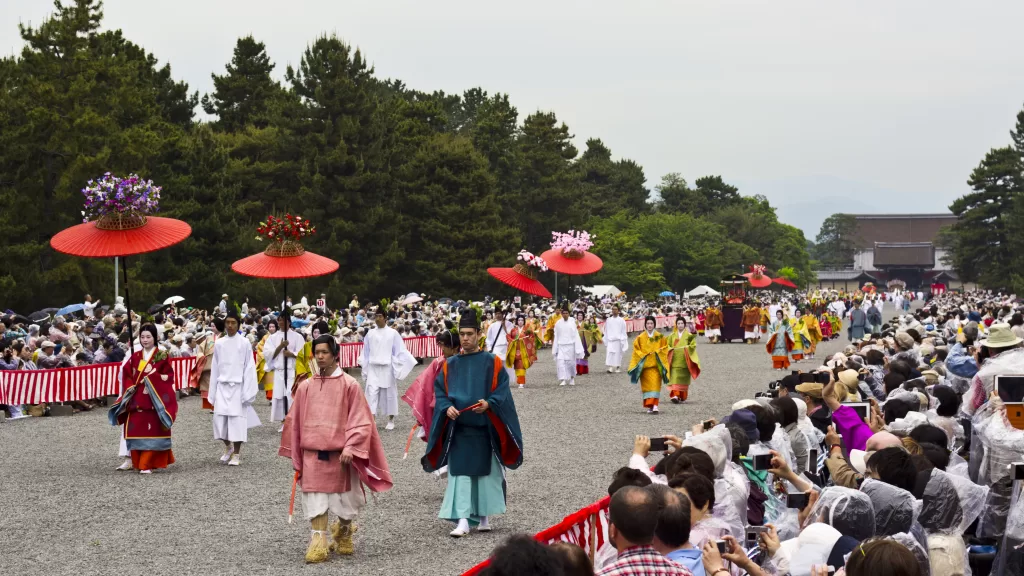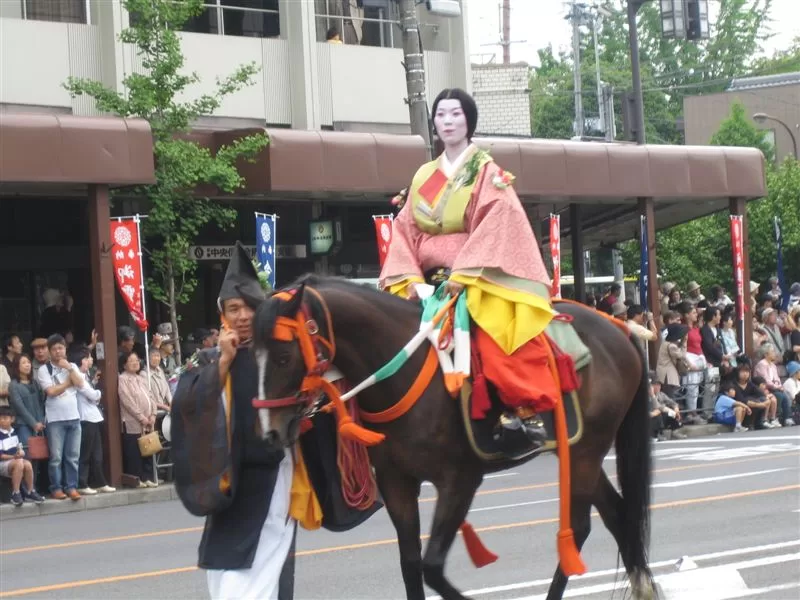Aoi Matsuri: Illuminating Kyoto’s History With Hollyhocks
The infallible charm of the Aoi Matsuri festival annually captivates visitors and residents alike in Kyoto, as one of the city’s biggest rendezvous. Each year, over 500 participants cloaked in traditional Heian period attire and hollyhock leaves grace this event— a spectacle worth paitently awaiting.

The Annual Gathering: Tracing Back to Japan’s Imperial Roots
Celebrated on May 15th each year, the Aoi Matsuri, also recognized as the “Hollyhock Festival,” pays homage to the Kamo deities at two Kyoto shrines, Shimogamo Shrine and Kamigamo Shrine. Shadows of its rites date back to disastrous storms during Emperor Kinmei’s reign (539-571 CE), believed to signify divine punishment. In an attempt to appease the deities, rituals – like horseback archery – were performed at these shrines. This tradition developed into an annual ritual and eventually unfolded into what is today celebrated as the Aoi Matsuri, one of the most awaited Kyoto events in May.
The gaiety surrounding the festival reached its peak during the Heian period when Emperor Kanmu turned the festival into an imperial event involving representatives from the emperor himself. However, like a lotus closing its blossom past dusk, the festival lost its radiance during Kamakura and Muromachi periods, even coming to a halt amid political turmoil during Sengoku era.
Renaissance Periods and Modern Times
Revived in Genroku era (1688-1704) of Edo period only to face discontinuation again in Meiji era (1869), post-World War II celebrations saw a resurgence from 1953 onwards as part of governmental endeavours to enliven Kyoto.
Embracing a Century-old Tradition: Saiō-Dai
In 1956, the tradition of selecting an unmarried woman from Kyoto as Saiō-Dai, high priestess’ role symbolizing ancient imperial princesses was renewed. This female member holds a central role in modern celebrations departing from the Imperial Palace dressed in stunningly intricate twelve-layered Heian costumes called jūnihitoe after thorough purification ceremonies.

The Grand Procession: A Symbolic Sight To Behold
With oxcarts immaculately adorned during Heian times and beautifully dressed court women among hundreds parading, viewers feel weaved into a historical scroll unfolding. Besides participants on horseback who instill fascination with their skills honed over centuries, transportable carts with enormous flower arrangements are another spectacle.
This stately procession that stretches over one kilometer winds down from Imperial palace through Shimogamo shrine towards Kamigamo shrine with men donning Furyugasa or aristocratic umbrellas decorated with flowers for protection against weather extremities.
The Hollyhock Significance
Performers’ court attire and carts are decorated with hollyhock leaves that play a key role in this festival. Once believed to protect against natural disasters such as earthquakes and thunderstorms during Heian period (794–1185 AD), these leaves were hung under house roofs for protection epitomizing perseverance.
Interestingly, while commonly misused interchangeably with “hollyhock”, Asarum (wild ginger belonging to birthwort family) is used for decorations during this festival which lends the name ‘Aoi.’ Its rarity often invites substitution by similarly shaped leaves such as katsura tree leaves.
With some parade areas featuring reserved seating for paying guests, most of it can be viewed freely along ideal spots by getting there ahead of time. As we get ready for more physical festivals post-pandemic restrictions easing up globally, this splendid parade spanning across entire hours is indeed worth watching against panoramic backdrops of Kyoto’s main shrines.
Despite multiple revivals and occasional shifts away from its original components due to geopolitical conditions or plant availability for decorations’ rarity – Aoi Matsuri unequivocally remains among Japan’s most celebrated festivals showcasing its rich cultural history through some five-century-old traditions alive till date.
Immerse yourself in the rich traditions of Kyoto during the Aoi Matsuri festival and don’t miss the exhilarating Yabusame Shinji ceremony at Shimogamo Shrine.